“Transfer molding creates intricate components with precision and consistency. It enables efficient encapsulation of inserts and produces robust parts with superior dimensional accuracy and material integrity.”
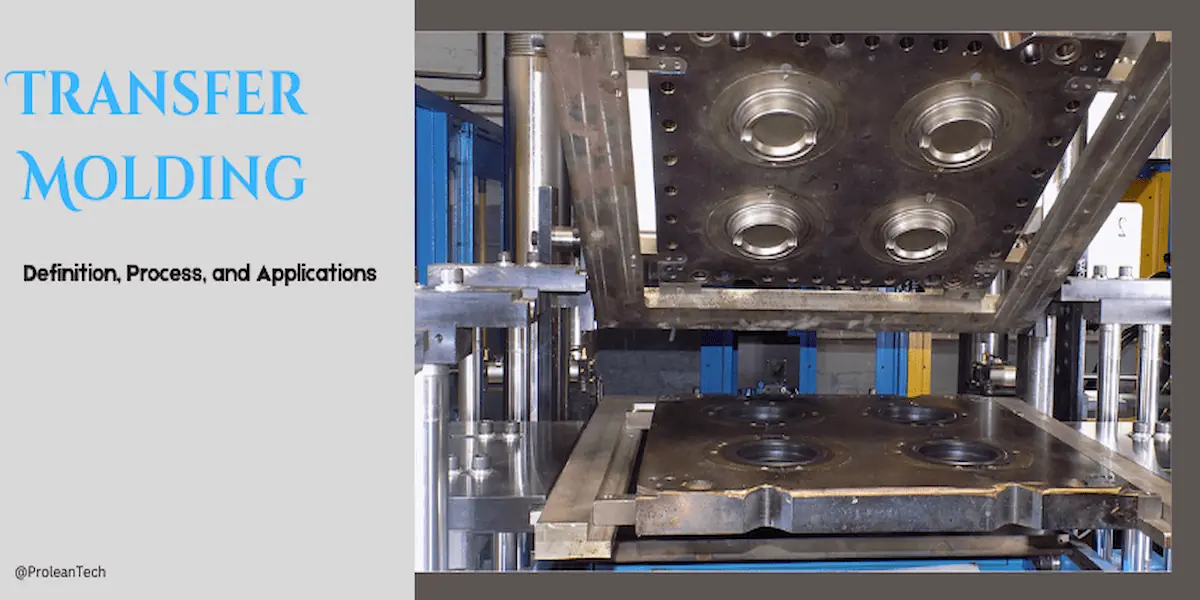
Molding refers to shaping the material by pressurizing or injecting the material into a die of pre-determined geometry. Typically there are two types of molding techniques; Injection & Compression Molding. What is Injection Molding? A molten form of material is injected at high pressure into die cavities. Mesnwhile, compression molding involves heating & compressing the die after placing the material into the die cavity. Here, these two methods are suitable for distinct material and application requirements. However, transfer moding is a specialized moulding strategy that combines the capabilities of compression & injection molding.
Furthermore, this article will elaborate on the concept & process of transfer molding in detail.
What is Transfer Molding?
Transfer molding is a manufacturing technique for forming components of desired shape and size by allowing the transfer of preheated molten casting material into the closed mold through sprues. It combines the features of both injection and compression molding. The molding charge is placed in a pot where the heating process is completed and is introduced into the mold through compression by the plunger. The molded component is then ejected by using an ejector pin. This process uses a hollow mold whose inside surface defines the shape of the desired component. Unlike injection molding, transfer molding uses a plunger or vertical runners to discharge the molding charge and uses heat and pressure instead of only pressure, as in compression molding.
- High precision and dimensional consistency across batches
- Insert molding capabilities
- Low flash & blemishes imperfections
- Diverse material options and design flexibility
Try Prolean Now!
The Transfer Molding Setup
It is a process of forming components in a closed mold from a thermosetting material combining compression and injection moulding ideas. The transfer molding setup consists of the following components:
- Plunger : It serves to push the molten charge into the mold.
- Transfer chamber/ Pot: It holds the charge until heated to a molten or semi-molten.
- Sprue: It is a passage that allows molten charge to enter the mold.
- Mold Cavity: It is a hollow part that receives the molten charge and defines the desired shape of the component.
- Heaters: Heat charges to a molten or semi-molten state.
- Ejector Pin: It is an ejector system that pushes the resulting mold out of the mold cavity.
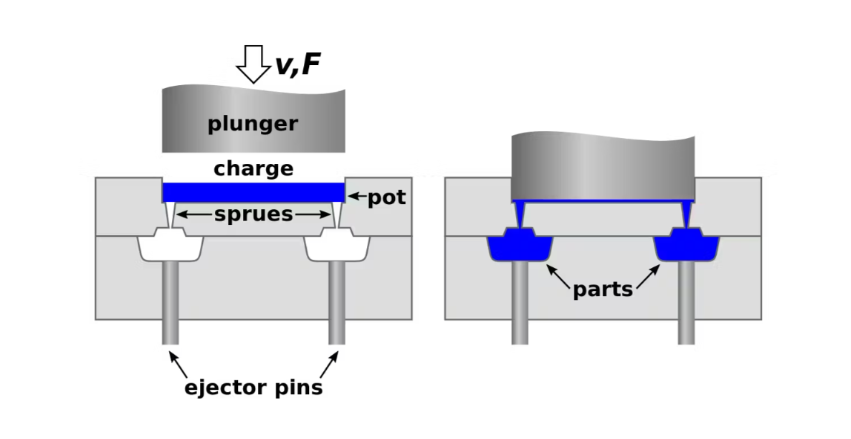 Transfer molding setup
Transfer molding setup
First, the molding feed is prepared by converting the chosen compound into powder, granules or pellets, and the compound is heated to a determined temperature. Then the molding compound goes into the transfer pot when the plunger pushes the feed into the mold cavity through spures. The heat and pressure are continuously applied to cure the transferred resin, and the molding compound is forced to flow across the cavities to fill the mold. Under continuous heat and pressure, the material undergoes a chemical transformation to take the shape of the cavities. The plunger is then lifted to release pressure, opening the two mold halves. At last, ejector pins are used to eject the ready mold from the setup.
The surface finish quality of molded parts can be as low as 0.8 μm Ra if the cavity walls are smooth and the right temperature and pressure are used during the process. However, sometimes, the parts might require post-processing, like polishing or bead blasting, to meet the desired specifications.
Transfer Molding Material: Which Materials can be transfer molded?
This molding technique mostly deals with thermosetting plastics, rubbers, and some composites. For example, PTFE thermosets like Teflon are molded with transfer chamber and die due to the challeges in Teflon Injection Molding.
The common resin transfer molding examples are as follows;
- Epoxy Resins
- Phenolic Resins
- Silicone Compounds
- Polyester Resins
- Polyurethane
- Polyimide
- Polyetheretherketone
- Fluoropolymers
We can see that transfer molding resins are different from Injection Molding Material, as this method mainly focuses on thermoset resins. Meanwhile, injection molding is best for thermoplastics.
Moreover, the material selection for transfer molding projects should be based on the properties requirements and end use of the designed part or product. For example, epoxy resins are excellent chemical & electrical insulators and provide high mechanical strength. Similarly, Polyurethane is flexible and offers great impact resistance and abrasion resistance.
Examples of Resin Transfer Molding Products
Resin transfer molding is a manufacturing technique with a variety of applications in different industries. Its ability to manufacture intricate components of high quality is a major advantage in using this type of molding process. Some of the industries with wide application of transfer molding along with resin transfer molding products are as below:
- Automotive Components: It manufactures highly durable and dimensionally accurate products, including gaskets, seals, O-rings, vibration isolators and engine components.
- Aerospace and Aviation: Transfer moulding is used to fabricate electrical connectors and insulators for aircraft and produce composites for their interiors.
- Electrical Components: It is used to produce electrical components such as connectors, sockets, switches, circuit boards, and insulators, as well as to encapsulate semiconductor and integrated circuits.
- Medical Devices: Transfer molding technique is used in medical device manufacturing, including disposable medical components such as syringes and catheters and surgical instrument handles and housings.
Along with the above-mentioned uses, resin transfer molding is widely used for manufacturing rubber products such as washers and O-rings and other variety of goods, including handles, knobs and buttons for appliances, toys, keypads and various household and kitchenware components.
Try Prolean Now!
Transfer Molding vs. Injection Molding
The main difference between transfer and injection molding is their feeding mechanism. In injection molding, the material is fed into a heated barrel that melts it. The nozzle is connected at the end, which injects the liquid material into the die cavity. On the other hand, a pre-measured material is placed into a chamber, heated, and then forced through a plunger into the mold cavity during transfer molding.
Table: Transfer vs Injection Molding
| Criteria | Transfer Molding | Injection Molding |
| Setup | Complex setup: Hopper, transfer chamber, plunger, die, etc. | A heated barrel, nozzle, mold, ejection pins, etc. |
| Complexity | Suitable for producing intricate shapes and encapsulating components like HDMI cables. | Suitable for producing intricate shapes and encapsulating components like HDMI cables. |
| Cycle Time | It takes longer due to the additional steps of material transfer. | Short cycle time, high-speed production |
| Materials | Thermosetting plastics, rubbers, and some composites. | Thermoplastics, some thermosets, and elastomers. |
| Precision | High precision (±. 005 inch.) | High precision (±. 005 inch.) |
| Finish Quality | A good surface finish & might require post-processing. | Excellent surface finish with fine details. |
| Cost | Higher initial tooling and setup costs due to complexity. | Economical for large production runs due to lower cycle times. |
One benefit is that transfer molding solves some possible Injection Molding Defects like flash, air traps, sink marks, and un-uniform filling. Additionally, it is also easy to insert the secondary material parts to form a singular item with resin transfer molding.
Transfer Molding Vs Compression Molding
The material is directly fed into a pre-heated open mold cavity during the compression moulding process. Then, the plunger mechanism applies heat and pressure to shape and cure the part. This molding type is suitable for large-size and simple geometry parts. However, it is slower and may produce more flash than transfer molding. If we compare it with the transfer approach, Compression molding is more straightforward and economical for large, simple parts. But, it lacks the precision of transfer molding. Consequently, resin transfer molding products tend to be more structurally intact than compression olding.
Table: Transfer vs Compression Molding
| Criteria | Transfer Molding | Compression Molding |
| Process | Preheat and transfer material into the mold cavity | Directly places material into mold, applies heat and pressure |
| Complexity | Complex shapes, embedded inserts, encapsulation parts, etc. | Larger & simpler parts |
| Cycle Time | Moderate cycle time | Slower |
| Materials | Limited to certain thermosetting materials | Can handle diverse materials |
| Precision | High precision, even with intricate designs | Less precise |
| Finish Quality | Uniform and high-quality finish | It may require additional finishing steps |
| Cost | Generally higher due to precision and tooling | Relatively lower cost |
Related: Compression Molding vs Injection Molding
Try Prolean Now!
Summing Up
Transfer-molded parts are created by heating and transferring the pre-measured material into the die cavity with the plunger under pressure. This process provides excellent surface finish, dimensional stability, and minimal flash. The combined advantages of injection and compression molding make transfer molding ideal for encapsulating components such as electronic circuits and connectors. The transfer molding process’s precision, consistency, insert molding features, uniform encapsulation, and other similar capabilities are the reasons behind this.
If you need moulding parts, request Injection Molding Quotes here. Our advanced molding equipment, die manufacturing facility, and team of experienced engineers can ensure optimal quality at competitive prices.
FAQs
How does transfer molding work?
Transfer molding produced the final finished parts by heating the thermoset, and then transferring it into a mold under pressure. It is typically used for encapsulation applications.
How durable are transfer molded products? Life span in years?
They are highly durable, typically lasting 10-20 years. However, the lifespan depends on the materials used and the application environment.
Can you transfer mold heat-resistant parts?
Yes, transfer molding can produce heat-resistant parts using appropriate high-temperature materials like Teflon resins.
What are the transfer molding materials?
Epoxy resins, phenolic resins, and silicone compounds are some material examples.

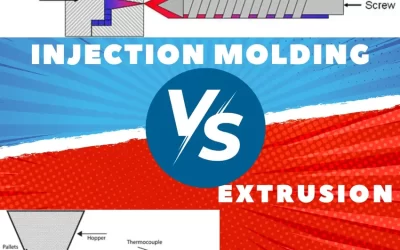
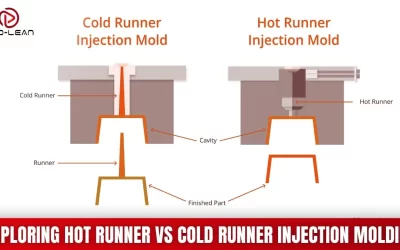
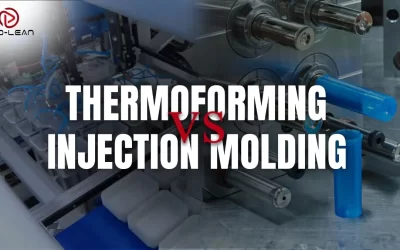
0 Comments